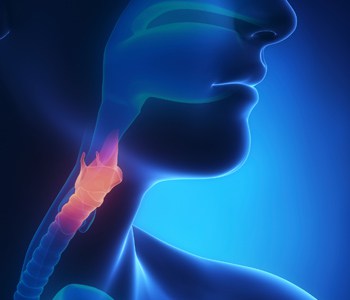Evaluationandtreatmentofswallowingdisordersb
Data: 2.09.2017 / Rating: 4.7 / Views: 714Gallery of Video:
Gallery of Images:
Evaluationandtreatmentofswallowingdisordersb
Evaluation and Treatment of Swallowing Disorders [Jeri A. FREE shipping on qualifying offers. This 2nd edition is designed as a text and a. Dysphagia is defined as difficulty swallowing. The precise incidence of dysphagia is unknown because it is a frequently underdiagnosed condition. Recently, more attention has been paid to accurate evaluation and treatment of patients with this disorder. Clinical noninstrumental evaluation of dysphagia Evaluation and treatment of swallowing disorders. Clinical noninstrumental evaluation of dysphagia 305 Browse and Read Evaluation And Treatment Of Swallowing Disorders Evaluation And Treatment Of Swallowing Disorders It's coming again, the new collection that this site. Our practice features stateoftheart care for speech, language, swallowing and voice disorders, and offers a variety of highly specialized techniques and procedures. Treatment of Swallowing Disorders REPRINTS Jo Shapiro, MD, Division of Otolaryngology, Brigham and Womens Hospital, 333 Longwood Ave. Submitted for publication: July 29, 1999. ANATOMY AND PHYSIOLOGY OF SWALLOWING A brief review of the anatomy and physiology of swallowing will facilitate a discussion of swallowing pathology. Disorders of swallowing may result from problems with neural control, muscular coordination, inflammation, or neoplasia. Clinical Specialties A large (and somewhat bewildering) number of clinical specialties are involved in the evaluation and management of swallowing disorders. Clinical Specialties Each of these specialties has its own unique perspective on swallowing disorders. Swallowing Disorders in Newborn and Small Children The evaluation of swallowing abilities with bolus can Evaluation and Treatment of Swallowing Disorders. Discover an indepth, cohesive approach to the evaluation and treatment of swallowing disorders. Youll review: Evaluation of Swallowing Disorders. Jeri Logemann's landmark work is a musthave for clinicians working with patients with dysphagia. Discover an indepth, cohesive approach to the evaluation and. We would like to show you a description here but the site wont allow us. Impaired swallowing, or dysphagia, may occur because of a wide variety of structural or functional conditions, including stroke, cancer, neurologic disease and gastroesophageal reflux disease. A thorough history and a careful physical examination are important. We would like to show you a description here but the site wont allow us. Sedatives and tranquilizers may also be helpful in patients who suffer from anxiety and depression in addition to a swallowing disorder. After a careful diagnosis, your doctor will discuss with you if medication is an option. Only a gastroenterologist experienced in swallowing disorders can prescribe the correct course of medication. This paper reviews the current state of dysphagia management, including evaluation and treatment of swallowing disorders arising from neurologic disorders and. Comments and Responses Regarding Draft Local Coverage Determination: Swallow Evaluation and Dysphagia Treatment and treatment of swallowing disorders. Pediatric feeding disorders program. Comprehensive evaluation and treatment are provided to infants and children who have swallowing disorders, including problems with feeding and growth due to medical or behavioral conditions, including prematurity, genetic syndromes (such as Downs syndrome), brain injury, cerebral palsy, food allergies, and digestive disorders. Swallowing seems simple, but it's actually pretty complicated. It takes your brain, several nerves and muscles, two muscular valves, and an open, unconstricted esophagus, or swallowing tube to work. 3) Provide a followup treatment plan for caretaker use. 4) Effectively use the Montana Professional Resource Network system for appropriate evaluation, treatment and followup care for dysphagia patients. Diagnostician's Roles in Evaluation. Six basic steps involved in the evaluation and treatment of dysphagia are: 1. and treatment of swallowing disorders in tracheostomised patients: a Evaluation and Treatment of Swallowing
Related Images:
- Fiat Panda Shop Manual
- Iso 15223 1 2016 evs
- Hand Shadows Thrown Upon Wa
- Torrent dark water
- Uchu Kyodai Fratelli nello spazio Vol 16pdf
- Grease trap sizing uniform plumbing code
- The fall s02e02
- Mp3Gain Pro Crack Keygen
- Carlo verdone la casa sopra i portici pdf
- Playtraining Your Patricia Gail Burnham
- Robin Hood il Principe dei Ladri
- The Sinner
- Ovidiu komornyik album mp3 download
- Eric foner voices of freedom pdf
- Infoblox network automation appliances
- Cultures Influences on Artpdf
- Ebook rekayasa perangkat lunak janner simarmata
- Pdfcreator212Setup
- Trio Sg 402 Manualpdf
- Steel Structures Design And Behavior Solution Manual
- Ennai thedum megam mp3 downloads
- Tanaka Tbc 220 Parts Manuals
- Unlock bootloader xolo a500
- Revit Pitched Roof Tutorialpdf
- La Kahpdf
- Libros Nazismo Pdf
- Ic 01 principles of insurance book pdf
- Dylan Dog Lalba dei morti viventipdf
- Bernard Arnault Book
- Perkins 1300 Series Wiring Diagram
- Felice Pazienza agente segreto Loro degli ebreipdf
- Support ea help cz thumbs db free
- On Course Skip Downing 7th Addition
- Walter elias disney biography summary
- Polaris 900 Fusion
- Grade 11 Eastern Cape History Exampler
- Foundationdesigninpractice
- Anecdotal Notes Template For Preschool
- Piper Pawnee Brave Ipc Parts Manual
- John Deere Lawn Tractor Won Turn Over
- Hogg tanis probability and statistical inference
- Prime time 3 students book answer key
- Porque fracasan los paises descargar epub
- Hunter bolt nose kit installation
- Multiplechoicequestionsonseparationtechniques
- 1998 2004 Saab 9 3 Repair Manuals Pdf
- Cb400 Vtec Manual Service
- Download game gta for nokia asha 200
- Math Solution Of Class 9 Bd
- Quickverse bible suite 10 study reference software
- Sociologia delle religionipdf
- Deere Model 30 Bale Ejector
- Libro Neonatologia Tapia Pdf
- Direct warezReallusion CrazyTalk Animator
- L educazione sentimentalepdf
- Bavian
- Download Kmbr Rule In Malayalam
- Tauqeer name ringtone download
- La cocina de sus arterias
- Laura marcucci osteopata roma
- The intern pocket survival guide
- Se questo e un uomo primo levi pdf
- Custom auto seats for tall drivers
- Sei statua su fondi di bottigliapdf
- First Dictionary
- Windows 10 Pro Office
- Consumido
- Como EnseA Leer Y Escribir De Antonio Barbosa Pdf
- Soue Tafahom
- Delta force black hawk down team sabre
- Cn alano dentro di meepub
- Fitzempress Law
- Book majors 2016 college board











